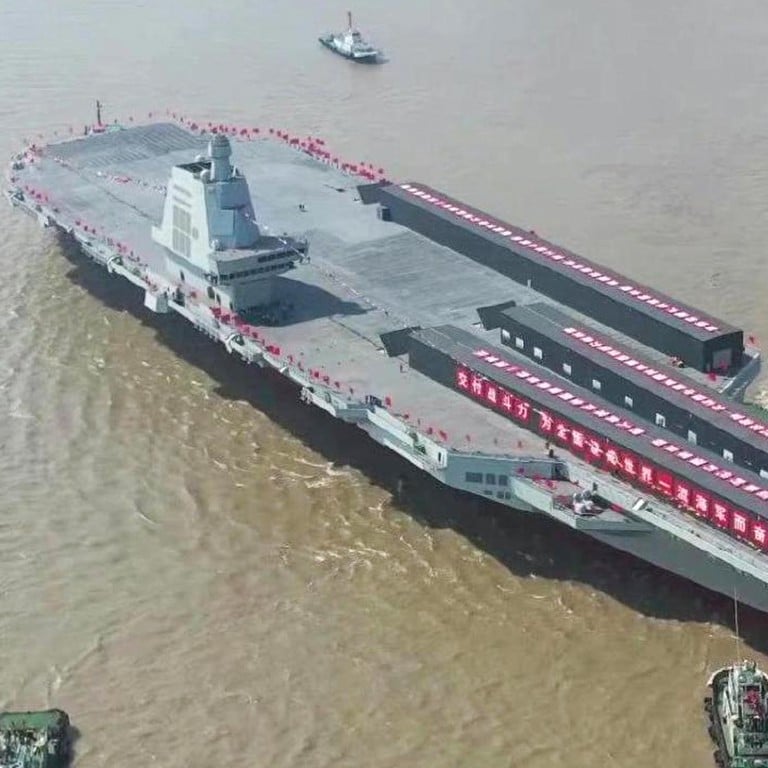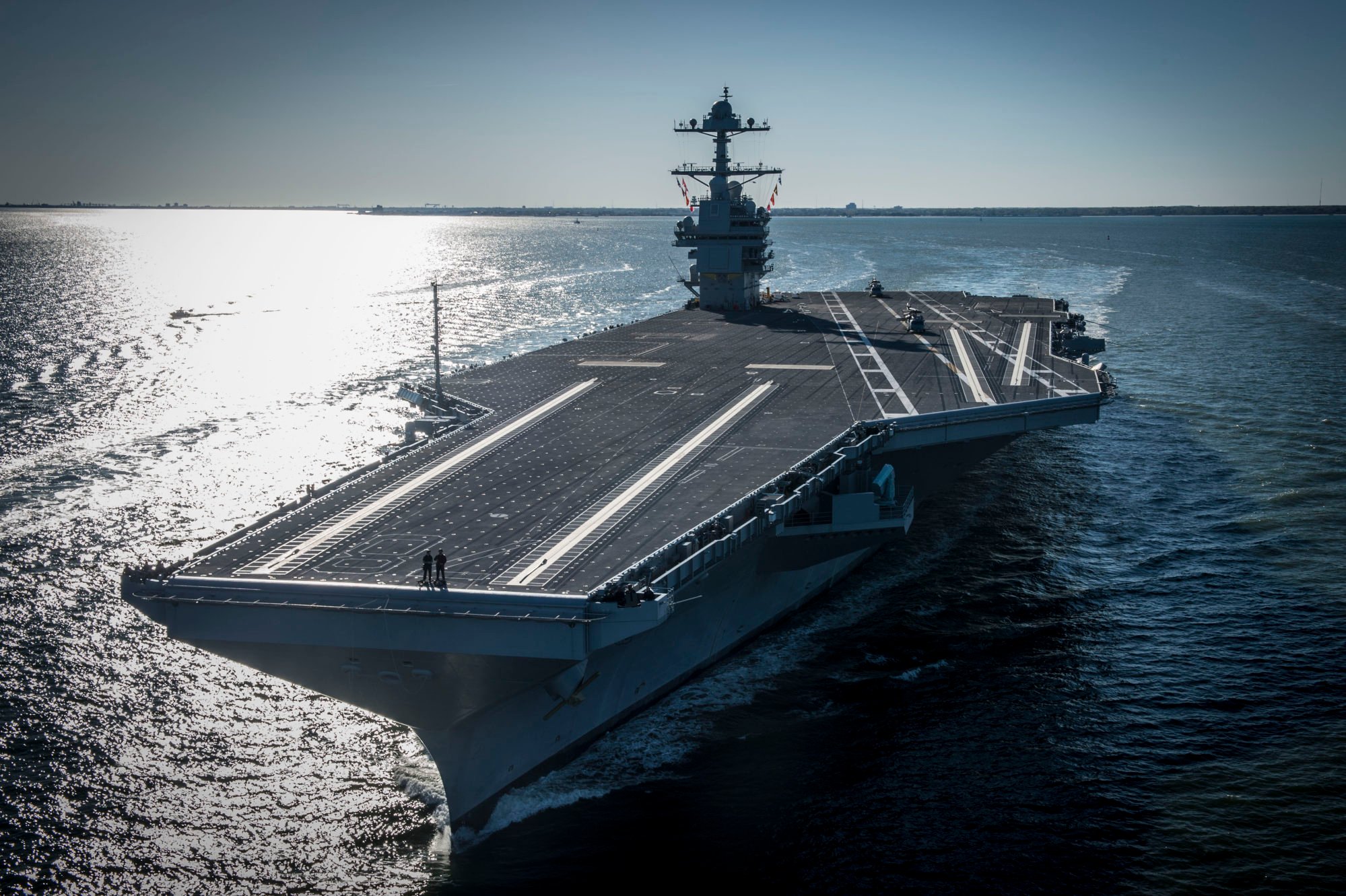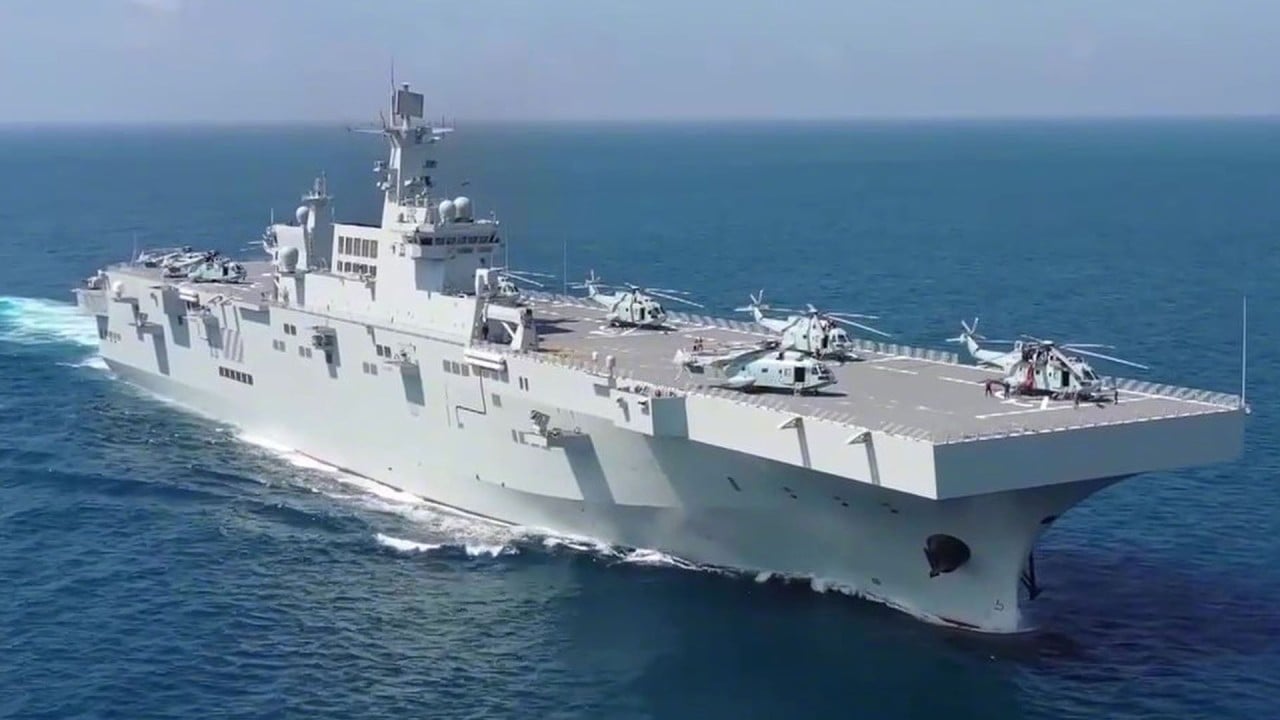
Newest Chinese aircraft carrier Fujian gives PLA an edge in Taiwan Strait: analyst
- Third and most advanced PLA aircraft carrier to be ready for combat in six to eight years, analyst Wang Hongliang says
- Air cover and fire support from the Fujian could give the PLA more options in the event of conflict with Taiwan, Wang writes in news website The Paper
It had taken the USS Gerald R. Ford – the US Navy’s newest aircraft carrier – nine years from its 2013 launch to become combat-ready in April this year, despite entering into service in 2017, Wang noted.
By comparison, the USS George H.W. Bush – a Nimitz-class supercarrier – went from launch to combat-ready in just over four years. This is because “its overall design and core system were highly mature” compared with the Ford, which adopted a lot of complex new technologies, Wang wrote in The Paper, a Shanghai-based news website.
China’s aircraft carrier No 4 not likely to be nuclear-powered: analysts
The time span between launch and combat-readiness for the Fujian should be somewhere in the middle of that for the two US warships, Wang said.
The nuclear-powered Gerald R. Ford is the lead ship in a class of aircraft carrier that will eventually replace the US Navy’s Nimitz-class warships.
The Fujian has made a technological leap that “must be accompanied by an increase in technical risks”, Wang pointed out, adding that China could take lessons from the US and Russian navies on ways to shorten the wait.
The 80,000-tonne Fujian, named after the southeastern Chinese coastal province facing Taiwan, is the PLA’s first domestically designed and built aircraft carrier. It is also the second carrier class in the world – after the Gerald R. Ford – to use an advanced catapult system that allows jets to launch more frequently and with a bigger payload of fuel and munitions.

While it waits to become combat ready, the role of the Fujian will be determined by the country’s surrounding security environment and the actual needs of the three major PLA Navy fleets, Wang said.
The East Sea Fleet, which is tasked with patrolling the Taiwan Strait, is currently the only one among the three to not have an aircraft carrier.
China steps up use of combat aircraft in Taiwan sorties
While aircraft carriers may not be the best-suited to take part in a conflict in the Taiwan Strait, the Fujian could provide the PLA with more tactical options by providing air cover and fire support to amphibious combat formations, Wang said.
Since Taiwan and the Diaoyus are both close to the mainland coastline, shore-based Chinese forces in the east would be able to cover the sea and air control tasks there, Wang said. In addition, the PLA also has various types of tactical ballistic missiles, cruise missiles, and attack submarines for longer-distance missions.
“The combat value of a highly manoeuvrable floating airfield would be compromised [in the strait],” Wang said.
Also, Beijing has strengthened the amphibious combat capability of its East Sea Fleet – a priority in preparing for any likely conflict in the Taiwan Strait – with the deployment of the Type 075 amphibious assault ship named Guangxi, a Type 071 large-scale multi-functional dock landing ship, and more than a dozen Type 072 large-scale tank landing ships.
“The need for aircraft carriers in the Taiwan Strait mission is not so urgent, but it is always good to have more means of combat in wartime,” Wang wrote.
“If there is a need to conduct amphibious operations off the east coast of Taiwan, direct and sustained air cover and fire support for amphibious formations from an aircraft carrier would provide the PLA with more tactical options,” he said.
The PLA’s shore-based aviation forces have enough range for such missions, but Taiwan’s own very high density of air defence missiles and interception capability must also be taken into account, Wang said.
Chinese patrol vessels in Taiwan Strait make conflict ‘less likely’: analyst
“If the shore-based air force directly passes through the strait and the island [of Taiwan] to provide support for the war … it would face greater risks; however, if a detour is used to fly to the relevant airspace, their time in the battlefield airspace will be shortened,” Wang said. “Carrier-based aircraft do not face such problems.”
In addition, if there are conflicts in the Korean peninsula or in the South China Sea, or if one of the other two Chinese aircraft carriers has to undergo an overhaul, the Fujian could rush to these waters at any time, or perform rotating deployment tasks, he said.


